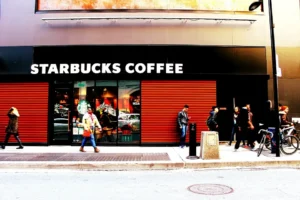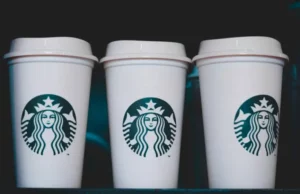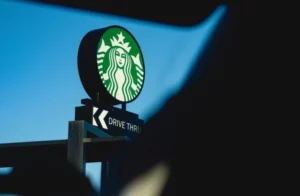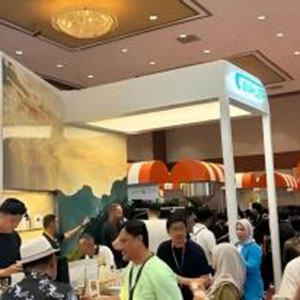
Coffee holds a significant place in American culture, and Starbucks has emerged as the top choice for coffee enthusiasts and those seeking premium adult-focused beverages. But how did a small coffee bean store in Pike Place Market grow into a colossal global empire with over 35,000 locations in just over five decades? Let’s explore the remarkable evolution of Starbucks.
Starbucks Business History
In the 1960s, Alfred Peet, founder of Pete’s Coffee and Tea in San Francisco, shared his vast coffee roasting expertise with Jerry Baldwin, Gordon Bowker, and Zev Siegl. These individuals, aiming to establish their coffee store, sought to embody the Pacific Northwest’s culture and the legacy of early American coffee traders. After considering several names, they settled on “Starbuck,” the first mate of the ship Pequot from the novel Moby Dick, adding an “S” for better flow. The iconic logo, a twin-tailed mermaid representing the mythological siren, was created by Terry Heckler and remains a symbol of the brand.
In 1971, the first Starbucks store opened in Pike Place Market, initially selling various fine coffee beans and coffee-making equipment, rather than the café experience it offers today. It took a decade before Starbucks started brewing coffee, expanding to four additional locations by 1982.
In 1980, Zev Siegl left, and Howard Schultz, a visionary New York businessman, joined Starbucks. Schultz, previously a sales rep for a Swedish kitchen equipment company, was captivated by a small chain of coffee stores in Seattle, eventually leading to his recruitment as the head of marketing. Schultz envisioned transforming Starbucks stores into European-style sit-down cafes, a concept relatively novel in the US at the time.
Although initially met with resistance from Baldwin and Bowker, Schultz departed in 1985 to start his Milan-inspired coffee shop, IL-GIORNALE, which saw success across multiple cities. In 1987, Schultz seized the opportunity, acquiring the 20-store Starbucks chain for $3.8 million and rebranded his IL GIORNALE locations under the Starbucks name. By the early 1990s, the company expanded to 100 locations and surged to 2,500 after going public in 1992, establishing itself as the world’s largest coffee shop chain.
Under Schultz’s leadership in the 1990s, Starbucks underwent significant transformations. Introducing new sizing formats like tall, Grande, and Venti, and incorporating drive-throughs in 1994, which contributed significantly to its revenue, were milestones defining the brand’s evolution. These innovations propelled Starbucks into unprecedented growth and solidified its place as a global coffee powerhouse.
From a small Seattle coffee store to an international phenomenon, Starbucks’ journey epitomizes the fusion of innovative concepts, consumer preferences, and strategic business acumen that propelled a simple coffee brand into a cultural icon.
Starbucks’ Growth and Challenges
In the mid-90s, Starbucks achieved significant milestones. It introduced the Frappuccino in 1995 and opened its first international stores in Japan and Singapore the following year. The company’s growth trajectory remained consistent until 2000 when Howard Schultz shifted from CEO to Executive Chairman.

Three years later, Starbucks unveiled the iconic pumpkin spice latte. By 2005, Starbucks had grown to a staggering 10,000 locations, a monumental leap from just 15 years prior. The brand’s seemingly rapid ascent left many with the impression that it had sprung up overnight, a perception not far from reality. From 2000 to 2007, Starbucks established nearly five new locations daily, peaking at 2,500 new stores in 2007.
However, the landscape shifted with the emergence of fierce competitors like Dunkin Donuts and McDonald’s McCafe menu. Starbucks faced a new era of competition.
The economic downturn of the Great Recession in 2007 hit Starbucks hard, causing a 42% stock price decline. Schultz returned as CEO and made drastic decisions, including the closure of about 1,000 underperforming stores, resulting in the layoffs of nearly 7000 baristas. To revitalize the brand, Schultz removed automatic espresso machines, temporarily closed all U.S. locations for retraining, focusing on a more hands-on barista experience. Despite its severity, these actions proved effective. Within two years, sales rebounded, and the company’s stock value rose to new heights.
In 2009, Starbucks launched its rewards program, capitalizing on the growing smartphone trend, becoming one of the first major corporations to leverage mobile technology for customer loyalty.
Starbucks Controversies and Legacy
Starbucks’ signature dark roast initially set it apart but invited criticism as the company expanded globally. The uniformity of flavor was crucial, but many found it overly burnt, leading to derisive nicknames like “Starburnt” and “Charbucks,” even sparking a legal dispute with Black Bear Micro Roastery over their “Charbucks” line of dark roasted coffee.
Additionally, Starbucks faced scrutiny over its treatment of workers attempting to unionize. After more than 325 charges of unfair labor practices, Schultz defended the company’s vision but acceded to enhanced benefits for non-unionized locations, causing the calls for unionization to subside.
Throughout its history, Starbucks introduced beloved beverages that have come and gone. Notably, Teavana, acquired in 2012, faced closure within five years, with all locations shut by 2018.
Today, Starbucks spans over 35,000 locations in 80 countries. The company’s select “Starbucks Reserve” sites offer premium coffee experiences, reflecting the finest quality sourced from single origins. Schultz’s vision culminated in Milan’s Starbucks Reserve, a 25,000 square foot establishment offering diverse Italian favorites in addition to coffee.
In conclusion, Starbucks’ journey represents unparalleled growth, controversies, and adaptations, showcasing its evolution as a global coffee giant.




